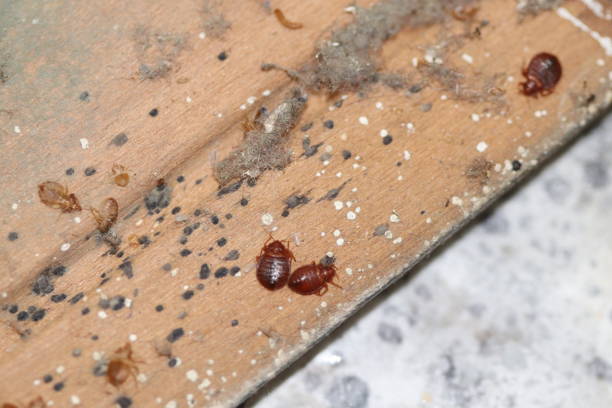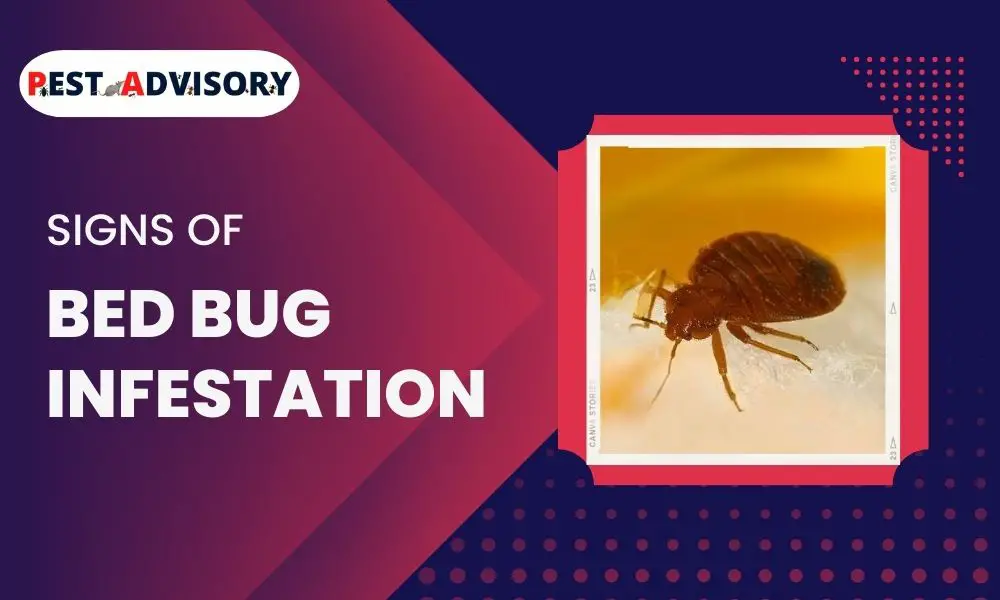Pest infestations are growing every day. Pests have become more adaptive, skillful, and resistant to pesticides than before. In some cases, they can be extremely harmful and even difficult to get rid of, and one such stubborn insect is a bed bug!
In this article, we will help you identify whether or not you have a bed bug infestation in your home. We will discuss their hiding places, signs of infestation, signs of bug bites, and how to identify them. So, without further ado, let’s get started!
Where Do Bed Bugs Hide?
If you’re facing an infestation, then bed bugs might be present everywhere in your house!
Yes, that’s right, everywhere!
Bed bugs can hide in the smallest of places that might not be even visible to us. A serious infestation can mean that every crack in your walls or furniture is their hiding place, and can be extremely difficult to get rid of.
The key hiding place of these little insects is your mattress. Hiding in the mattress gives them easy access to their host at night, which makes their job simple. They can hide in your mattress, pillows, sheets, etc. very easily without being caught.
Bed bugs are very tiny, about the width of a credit card. Though they usually prefer to stay on or near your bed, they can also hide and lay eggs in the cracks and crevices of walls and furniture.
They are likely to hide in narrow places such as behind your bed, furniture, or cabinets, but they are most likely found in cracks near your bed, where they can easily crawl up to the host at night.
Other places they may hide are under peeling paint or loose wallpaper, under carpeting near baseboards, in upholstered furniture seams, or under switch plates or electrical outlets.
Signs of Bed Bug Infestation
There are many signs you can look out for to determine whether you have bed bugs or not. Here are a few!
Odor
If there are bed bugs in your home, you’ll notice an unfamiliar musty odor. This odor can be quite strong if large amounts of these pesky critters are present. This is because bed bugs release pheromones which have a strong and unpleasant smell.
Stained Sheets
If you wake in the morning and find little red stains of blood on your sheet, then it is likely you are facing a bed bug problem. This happens because sometimes, unconsciously, we may squash a few bugs in our sleep, which leave stains on the sheet. There can also be blood spots on your skin or clothing in the morning.
Dark Spots on the Mattress
Dark, rusty spots on your mattress are indicative of bed bugs. The reason is that bed bugs leave fecal stains wherever they live in large numbers, which is most likely to be your mattress. These spots smear when touched and have an unpleasant odor.

Dark Spots on the Walls
Bed bugs can hide in the cracks of your walls or under wallpaper, so they may likely leave fecal stains on the walls as well. If you suspect an infestation, you can try to closely examine your walls for dark, rusty, and smelly spots.
Bed Bug Shells
Bed bugs grow through various stages before becoming an adult. In this process, they shed their outer covering, also known as shells. These shells appear white and husk-like. You can discover these on your mattress, cushions, under furniture, etc.
White Spots on Furniture Joints
You may discover small white spots in the joints of your furniture or crevices of your mattress or carpets. These are small white eggs or young bed bugs. These spots are not easy to find, so you can use a flashlight over all the hiding places of bed bugs and monitor them closely.

Bed Bugs in Surroundings
Bed bugs spread quickly! If you know that they have arrived in your neighborhood, then they won’t take much time to make their way into your home. Other places where bed bugs may arrive at your house are hotels, dorms, lodgings, etc. They can hitch-hike a ride with your luggage to your home and multiply in a matter of months.
Second-Hand Furniture
If you recently bought second-hand furniture or a used mattress in your home, you have likely invited trouble for yourself. Bed bugs are most likely to enter your house with second-hand purchases. It is important that you check, clean, and disinfect any such items before bringing them in.
How to Identify Live Bed Bugs?
To fight a pest infestation, you should first know what you’re up against. Bed bugs can be confused with many similar-looking insects such as fleas and ticks. We will tell you how you can identify a bed bug by looking at it.
Bed bugs are small and reddish-brown insects that feed on human blood at night. They can range in shades of brown at different stages of their lives. They are known to be about the size of an apple seed. Bed bugs have six legs and two antennae.
Remember that bed bugs cannot fly or jump in any stage of their life cycle, they can only crawl. So if you spot a flying insect, it is NOT a bed bug. They hide in compact spaces and are mostly nocturnal.
How to Check For Bed Bugs?
Since you already know where bed bugs hide, half of your task is done! But the hiding places of bed bugs can be as small as a minor crack in your wall which won’t be even visible to you unless monitored closely. For this, you’ll need a flashlight and a business card.
Bed bugs live in clusters, so a small crack may be harboring as many as thousand-bed bugs. There is one simple trick you can use to identify their homes.
Monitor every nook and corner of your house carefully by using a flashlight. Use the flashlight for small spaces such as to look for any cracks in your walls or furniture, cabinets, or dark spaces behind or under furniture. You will be able to see live bed bugs mostly by using this technique.
For bed bugs that are hiding in deep and thin cracks, and which cannot be normally visible using a flashlight, a business or credit card will do the trick. Bed bugs are about the width of a credit card. Try inserting a credit card in any crack in your wall and furniture, in which you cannot look inside. If the credit card can be inserted there, it is most likely that it is a home for bed bugs in case of an infestation.
Using these two tools carefully can ensure that you’ll easily find all the hiding spots of bugs at your home.
Symptoms of Bug Bites
A clear indicator of having a bed bug infestation is if you wake up with bug bites. Here are some symptoms of bug bites that can help you identify them.
a) Red areas with dark red spots in the middle.
b) Red spots are arranged in lines or clusters.
c) They are often itchy
d) They are mostly located on the upper body- face, neck, arms, and hands.
e) Some people may even experience an allergic reaction in response to bug bites such as severe itching and blisters.
f) These bugs usually bite in a timely pattern, so you may notice the bites once every 2-3 days.
Bed bugs can be difficult to differentiate from the bite of other insects such as fleas, so it is best to consult a medical professional in this case.
Final Words
If you want to fight your enemy, it is most important to know your enemy first! We hope you know now whether you are fighting bed bugs or not, and if you are, then now is the right time to eliminate them!
There are a variety of DIY techniques like steaming, freezing, and essential oils that you can effectively use to repel or even kill bed bugs, but take the first step now! All the best in your endeavor, and we hope we have added a little value, supported, and educated you through this journey.
